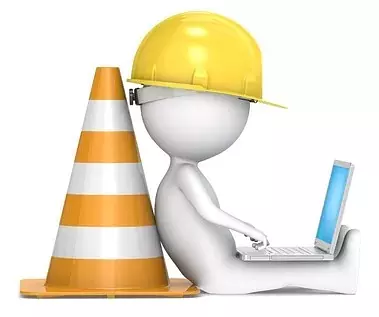 Forklifts are heavy, complex machines. The engines might be easy to start, but if an inexperienced operator gets behind the wheel, he or she can make the machine a hazard to everyone in the workplace.
Forklifts are heavy, complex machines. The engines might be easy to start, but if an inexperienced operator gets behind the wheel, he or she can make the machine a hazard to everyone in the workplace.
Like driving a car, operating a forklift requires in-depth knowledge of the rules and standards that keep others safe. These guidelines extend far beyond wearing a seat belt and looking in the direction of travel; operators must also understand the mechanics of the truck, and how to minimize the chance of common risks, such as tip-overs.
This article will introduce some must-read information that all forklift drivers should understand thoroughly. Remember: If you get behind the wheel of a forklift, you are responsible for the safety of all surrounding workers and pedestrians, so don’t take the risk unless you have undergone formal, supervised training.
Knowing How to Properly Operate the Platform is Vital
For new drivers, this definitely won’t be Lesson One, but understanding how to control the platform is among the most important factors to ensure safe operation.
Before entering the carriage, conduct a pre-operation inspection. Check for mechanical problems with the platform. This includes looking for issues that could make the upright bind. As a test, lower and raise the platform before allowing a worker to stand on it.
During the pre-operation assessment, look for a loose chain or object that might cause the rails, platform, or forks to drop or hang up. The upright should not be tilted; it should remain in a vertical position when raising the platform. Even when no load is on the lift, never allow an employee to walk below a raised platform or to climb the upright.
There are strict limitations regarding how personnel interact with the platform. The forklift should never be re-positioned or moved while the platform is elevated, or when workers are on the platform. Only re-position a truck after all personnel have dismounted.
If you are required to raise personnel up to the work site, make sure the right platform design is used. Also, never permit a worker to use the mast or upright as a ladder.
Before operating the platform, check that it is stacked securely to the backrest/fork, and that it is safely secured with a chain before moving the forklift. No section of the platform should interfere with the functioning of the upright or the carriage.
Three Considerations during Forklift Operation
A forklift-operation training program should be comprehensive, and it should end with a detailed assessment of the trainee’s knowledge. But there are a handful of considerations that must never be overlooked, even by veteran drivers. Here are three of them:
1. Be Aware of Overhead Clearance
Maintain a minimum of 10 feet of clearance from overhead electrical wiring. Before operating the lift, make note of any obstructions, such as low doors or pipes that could collide with the overhead safety guard. Running into these objects could cause the lift to tip over.
2. Use Rear Steering When Appropriate
Oftentimes, a crowded workplace or a tall load will not allow a driver to move forward. In these cases, use rear steering, and make sure you look in the direction of travel. Be careful when turning on soft shoulders, and avoid curbs that could cause the truck to tip over.
3. Don’t Turn Too Sharply
This is especially important when forks are raised. At both low and high speeds, with and without a load, sharp turns can cause a tip-over.and make sure you look in the direction of travel. Be careful when turning on soft shoulders, and avoid curbs that could cause the truck to tip over.
If you are working in an uncrowded workplace and much of your work is performed at top forklift speeds with no load, slow down substantially before turning. Lifts are designed to be rear-heavy in order to offset the weight of loads, and this imbalance can be dangerous during sharp turns.
This list of guidelines is far from complete, but each of these rules is integral for proper forklift operation. Not only will they keep the driver and surrounding employees safe, but they also will prevent equipment damage that could disrupt production.
